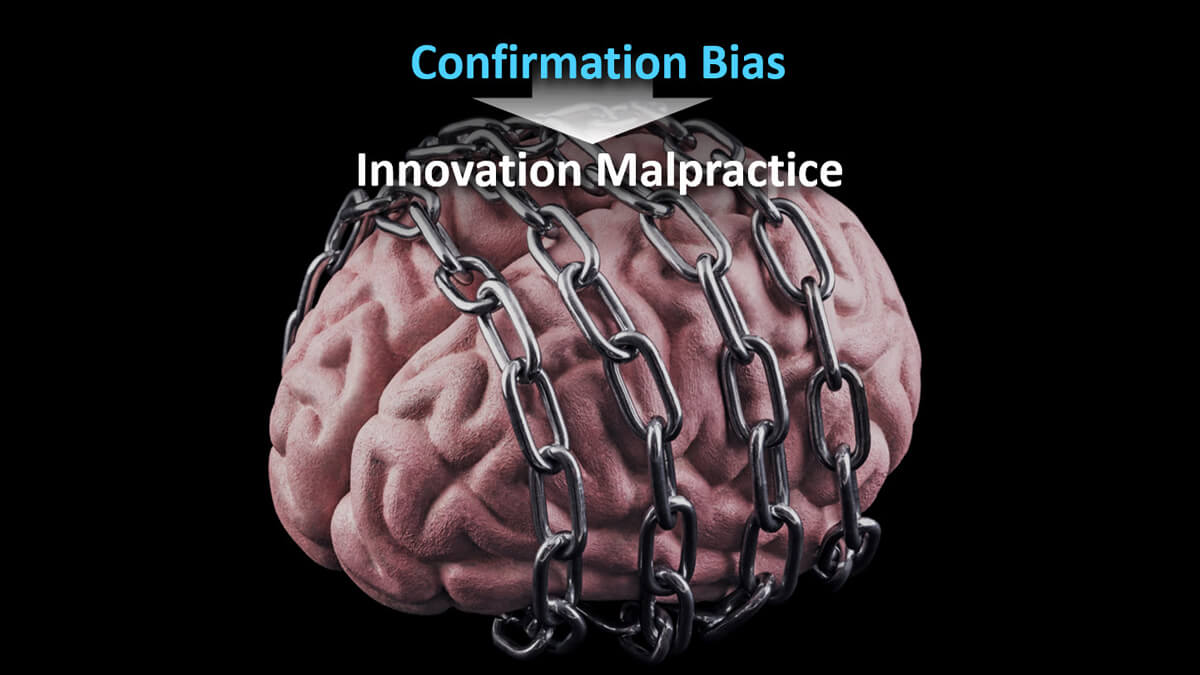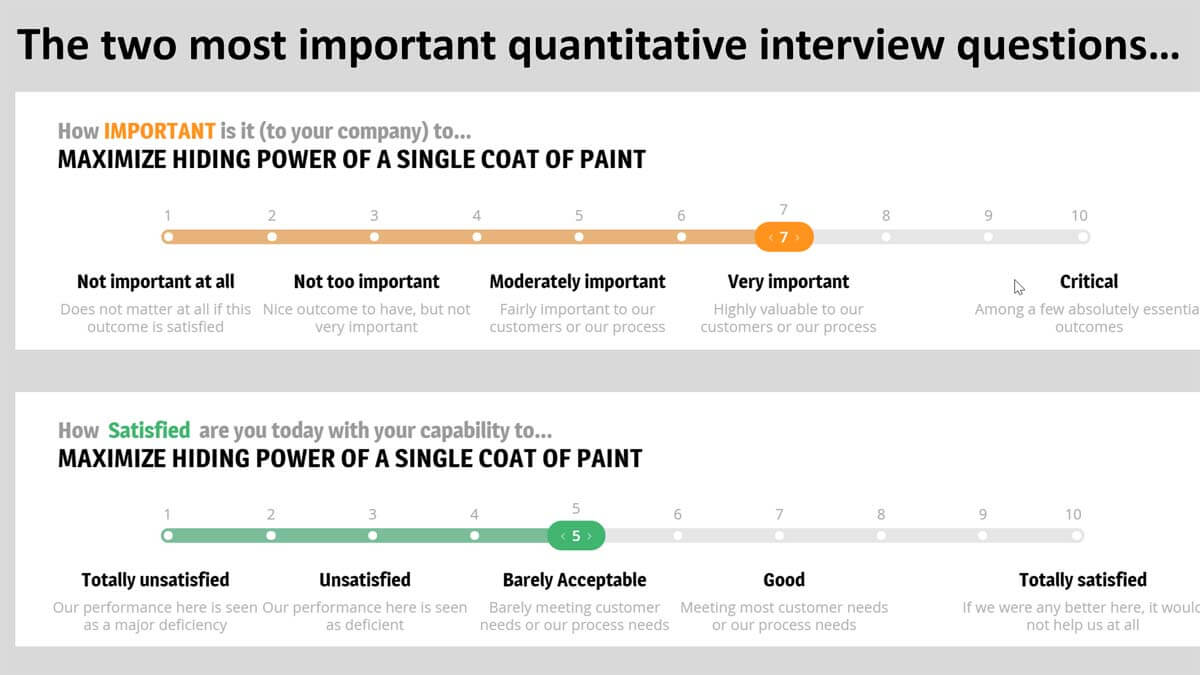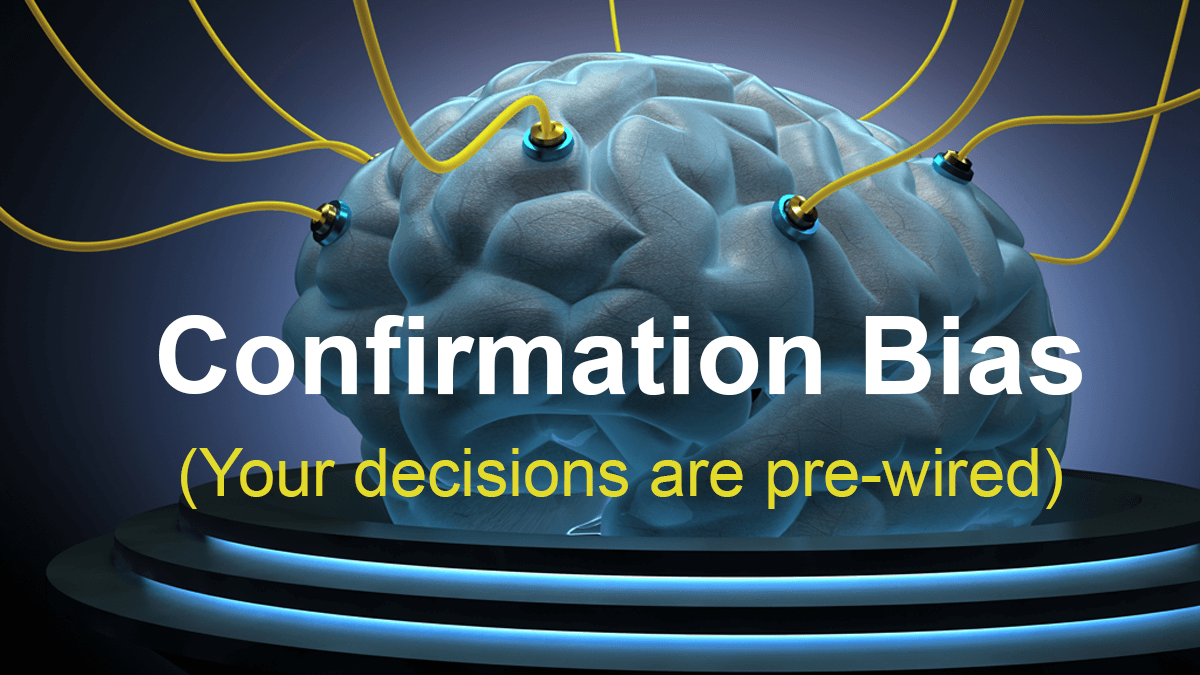In many areas of life, there’s the “old way” and the “new way.” Does your company still develop “hypotheses” internally, and then meet with customers to validate them? This can lead to confirmation bias for you and stifled yawns for your customers. In the “new way,” you start by uncovering customer needs, not by internally “ideating” your solutions.
More in e-book, Reinventing VOC for B2B
Many companies think they have learned about customer needs when they visit customers to validate their hypothesis or potential solution. They have not. They have learned about market reaction. To a single idea. Their idea. On top of this, it’s likely this customer reaction was distorted by confirmation bias.
More in white paper, www.b2btimingiseverything.com (page 15)
Think you can validate your new product concept with customers and avoid confirmation bias? Good luck with that. In your last performance review, did you agree with your boss’s praise more than his criticism? If so, you may not have overcome confirmation bias quite yet.
So if you want to avoid innovation malpractice, you need to stop leading the witness in interviews. Let them lead you to what really matters to them. My suggestion: Focus your customer interview on their desired outcomes. Then just check afterwards to see if their outcomes are a good match for your intended solution.
More in 2-minute video, Give your hypothesis the silent treatment
I think the biggest mistake is failing to use quantitative customer interviews. Why use quantitative questions for interviews, not just qualitative? Two reasons. First, qualitative interviews give you reams of customer quotes with no good way to prioritize customer needs. Sure, you could count the number of times customers cite a need, but frequency of remarks is a poor substitute for customer eagerness to improve.
More important, with only qualitative interviews you’ll succumb to confirmation bias… the tendency to hear and interpret information according to your preconceived notions. With quantitative questions for interviews, you’ll have hard data on customer needs that your team hasn’t filtered or skewed. You get 100% unadulterated insight straight from the customer.
More in 2-minute video, Quantitative interviews are a must
If you bring a prototype to a customer, this is “concept testing”… which is different than voice of the customer research. Prototypes are fine later in the process, but for many companies this is their first discussion with customers. B2B concept testing should occur after front-end voice-of-customer interviews. If you start with concept testing, you’ll incur confirmation bias, less-engaged customers, and the false impression you’ve acted in a customer-centric fashion. See 2-minute video, Stop leading with your solutions.
More in article, Don’t Confuse Concept Testing With VoC
In our research, B2B professionals rated a strong value proposition as the #1 most important driver of profitable, sustainable organic growth. But what makes it strong? Certainly not the supplier’s opinion. A value proposition is only strong if it addresses outcome(s) important and unsatisfied to the customer. This is the part that most B2B new-product teams bungle. They guess, hope, or hypothesize which outcomes customers want. Big mistake. Without unbiased, unfiltered data, most teams are led astray by their confirmation bias.
More in video, Leader’s Guide to B2B Organic Growth series, Video Lesson #19
In B2B-optimize quantitative interviews you ask customers to rate importance and current satisfaction for key customer outcomes. Without these convergent interviews, you’re essentially “guessing” what customers want. You simply cannot trust qualitative insight alone, as we all tend to “hear what we want to hear.” This is called confirmation bias… and the only antidote is to ask customers to think in a structured manner, giving you quantitative data in an unfiltered fashion.
More in Preference Interview Research Report
Confirmation bias is seeking and interpreting data in a manner that supports our pre-conceived notions. Most innovation processes treat confirmation bias with apathy, when the proper response is dread. You increase your exposure to confirmation bias when you 1) start projects with your solutions, not customers’ outcomes, 2) ask customers to “validate” your ideas, 3) fail to identify and test all assumptions, and 4) skip quantitative customer interviews.
More in article, Market Satisfaction Gaps… your key to B2B organic growth
“Proven right” breeds confirmation bias; “be right” inspires a search for truth. In new product development, “proven right” seeks to validate the supplier’s ideas; “be right” explores customers’ worlds seeking what others have missed. “Proven right” results in squandered R&D spending and missed opportunities; “be right” in delighted customers, premium pricing, and pleasant financial review meetings.
More in e-book, Leader’s Guide to B2B Organic Growth
The human brain likes to diverge first (look at all these deserts), and then converge (the chocolate lava cake, please). We shortcut this highly-effective approach when we begin by asking customers if they like our idea, hypothesis, or prototype. First, diverge with an open-minded exploration of all customer needs in B2B-optimized, voice-of-customer interviews. When you converge in a later round of interviews, do so quantitatively, so your confirmation bias doesn’t kick in.
More in e-book, Leader’s Guide to B2B Organic Growth (Lesson 16).
Confirmation bias is the “tendency for people to favor information that confirms their preconceptions or hypotheses, regardless of whether the information is true.” It’s what happens when you take your lovely new-product hypotheses to customers. This systematically distorts data on customer needs… and that can’t be good for innovation, right?
More in article, Give your Hypothesis the “Silent Treatment” (Originally published in B2B Organic Growth).
In many areas of life, there’s the “old way” and the “new way.” Does your company still develop “hypotheses” internally, and then meet with customers to validate them? This can lead to confirmation bias for you and stifled yawns for your customers. In the “new way,” you start by uncovering customer needs, not by internally “ideating” your solutions.
More in article, Give your Hypothesis the “Silent Treatment” (Originally published in B2B Organic Growth newsletter).
Many companies think they have learned about customer needs when they visit customers to validate their hypothesis or potential solution. They have not. They have learned about market reaction. To a single idea. Their idea. On top of this, it’s likely this customer reaction was distorted by confirmation bias.
More in white paper, Timing is Everything (page 15).
Think you can validate your new product concept with customers and avoid confirmation bias? In your last performance review, did you disagree with your boss’s praise more than his criticism? If not, you may not have mastered confirmation bias quite yet. So stop leading the witness in interviews. Let them lead you to what really matters… to them.
More in newsletter, Give your Hypothesis the “Silent Treatment” (Nov-Dec, 2014)














